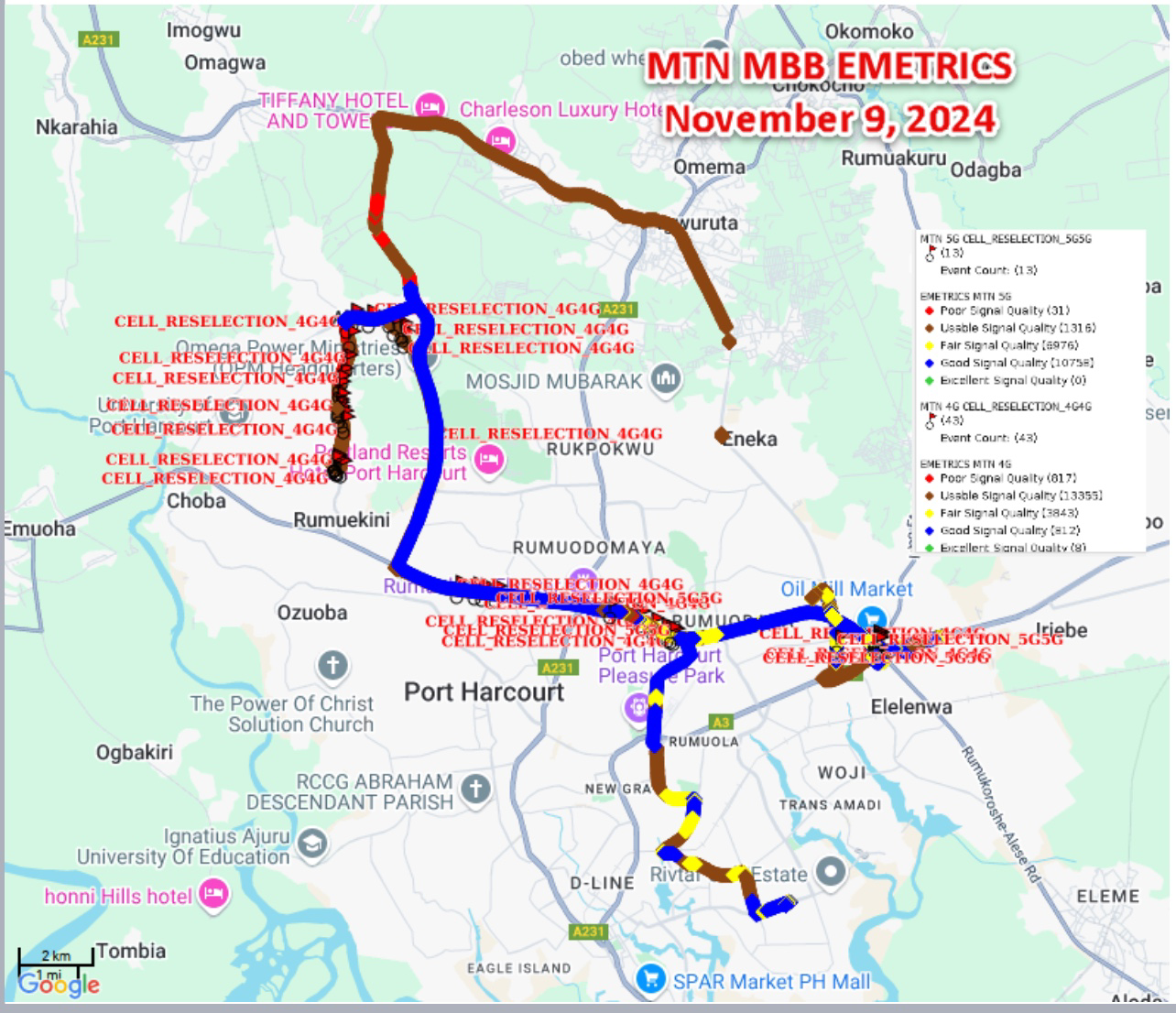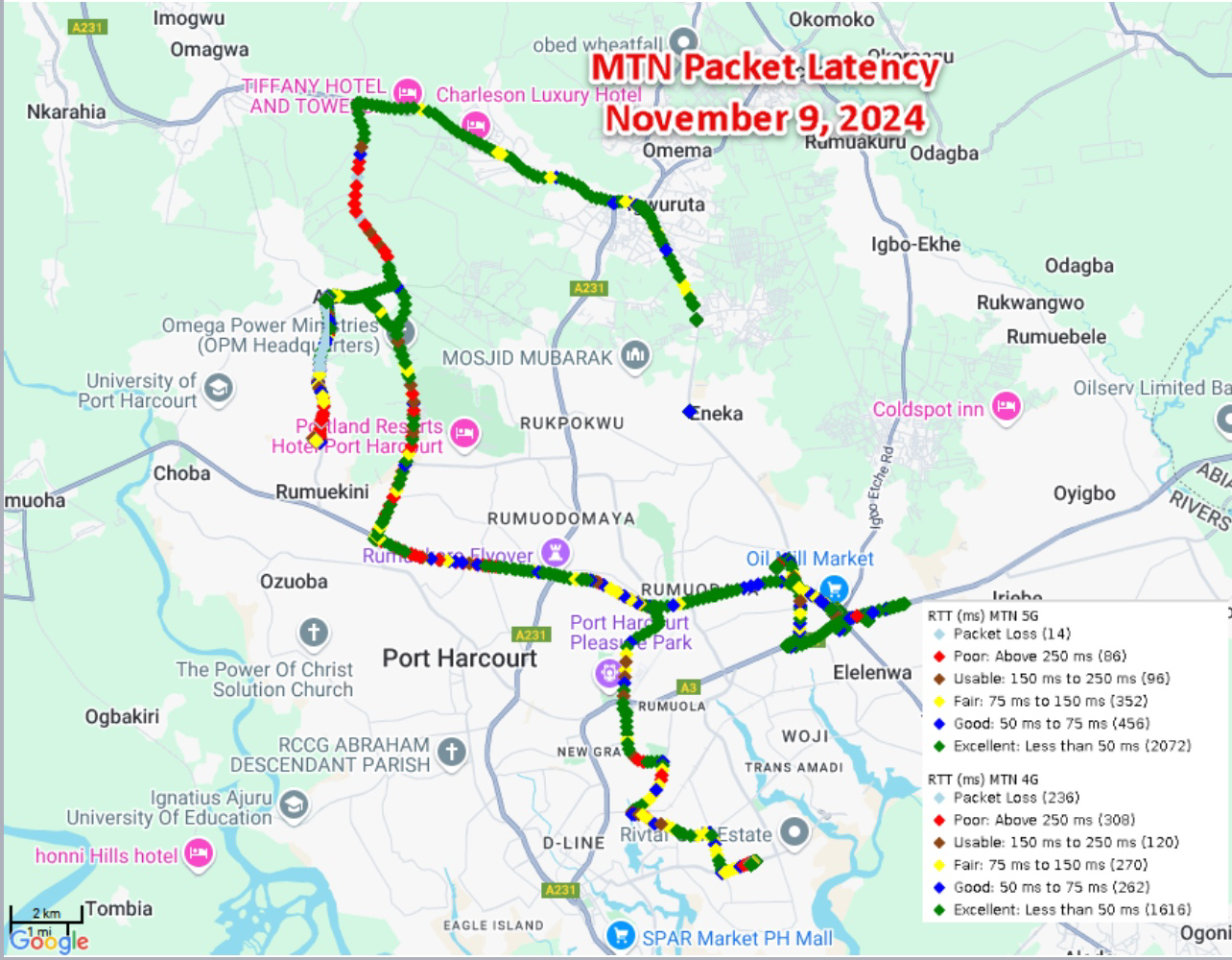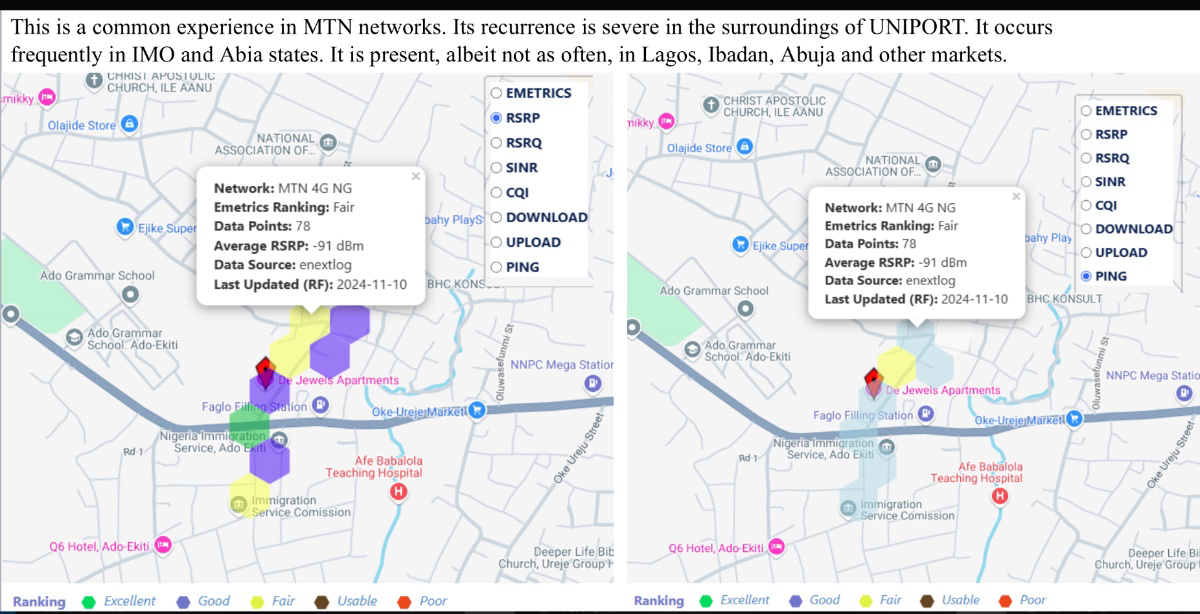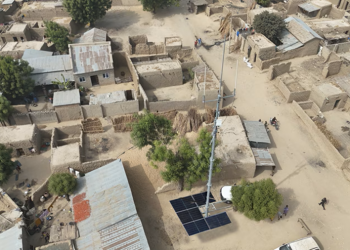The Nigerian Communications Commission (NCC) recently introduced a set of Key Performance Indicators (KPIs) designed to measure the quality of 4G mobile broadband networks across Nigeria.
With this, NCC aims to bring a more structured and transparent approach to network quality assessment in an industry that serves millions of subscribers nationwide.
However, Enextgen Wireless Limited, a telecommunications consultancy, questions whether these KPIs truly reflect the day-to-day experiences of Nigerian mobile users, noting discrepancies between NCC’s data and real-world network performance.
Key Metrics for Mobile Network Quality
The newly released KPIs focus on critical aspects of network functionality, encompassing metrics such as network stability, call quality, and data transmission success rates. The primary KPIs highlighted by the NCC include:
- ERAB Drop Rate – This measures the retainability of active data sessions, indicating how well the network holds connections during usage. Although this metric is useful for internal evaluations, Enextgen argues it may not translate into an enhanced user experience, as subscribers may not notice minor drops during their usage.
- RRC Setup Success Rate – A metric for the success of Radio Resource Control (RRC) setups, which is fundamental for initialising communication between devices and network towers. While essential for technical stability, this KPI doesn’t directly address user satisfaction or experience, making it more relevant to network operators than to everyday users.
- Circuit-Switched Fallback (CSFB) Preparation Success Rate – This KPI measures the effectiveness of voice calls on 4G networks when fallback to 3G is required. However, Enextgen questions its relevance in the current space, where 4G and 5G networks support Voice over LTE (VoLTE), a modern approach that bypasses the need for fallback. A KPI focused on actual call quality might better reflect user experience with voice services.
- Inter-cell Handoff Success Rate – This assesses the effectiveness of cell-to-cell handoffs, particularly valuable in urban areas where users frequently move between coverage zones. However, Enextgen notes that missing or unregistered handoffs, often due to undefined relationships between neighbouring cells, disrupt connectivity and frustrate users, highlighting an issue not fully captured in the NCC 4G KPIs.
Field Observations Highlighting Performance Gaps


Enextgen Wireless Limited conducted independent assessments in cities like Abuja and Port Harcourt, revealing discrepancies between NCC’s metrics and real-world network performance.


Their observations reveal that the NCC 4G KPIs may provide a polished picture of network conditions, but they overlook some key issues affecting subscribers.
One recurring issue is packet loss, especially in regions with generally strong radio frequency (RF) coverage. For instance, Enextgen’s analysis identified significant packet loss within MTN’s network around the University of Port Harcourt, as well as in parts of Imo and Abia states.

Although Lagos and Ibadan reported lower packet loss, the findings question the consistency of 4G quality across the country.
Such disruptions can lead to slower data speeds, degraded call quality, and interrupted connectivity, impacting the daily digital experiences of subscribers.
Another issue is infrastructure theft and vandalism. The impact of these activities—especially frequent in urban and semi-urban areas—on service quality cannot be understated.
Cable theft and damage to network infrastructure often result in extended downtimes, directly affecting the quality of service.
Even with these challenges, the NCC’s KPIs do not reflect the realities of these disruptions, which contribute to the disparities between the official metrics and the subscriber experience.
Bridging the Gap: Toward Customer-Centric KPIs
While Enextgen commends the NCC for initiating the KPI framework, they argue that the indicators do not sufficiently capture the customer experience.
They suggest adding KPIs that directly assess metrics like data speed, latency, packet loss, and call setup quality.
These would provide a clearer view of how well mobile networks meet subscriber needs and would enable the NCC to hold Mobile Network Operators (MNOs) accountable for maintaining high-quality service standards.
Moreover, Enextgen emphasises the need for KPIs that address network resilience against vandalism and theft, as well as metrics that reflect the consistency of network availability in underserved areas.
Incorporating these customer-centric indicators, NCC could align their evaluations with the real-world conditions faced by millions of Nigerian users, increasing transparency and fostering improvements in network quality.
A Call for Further KPI Refinement
The NCC’s release of new 4G KPIs is a foundational step toward standardised monitoring of mobile broadband services in Nigeria.
However, as Enextgen’s analysis reveals, these metrics are not yet fully aligned with the realities of everyday mobile usage.
With further refinements, including a focus on metrics that better capture the practical challenges faced by subscribers, these KPIs could become a powerful tool for driving tangible improvements in Nigeria’s mobile network quality.












